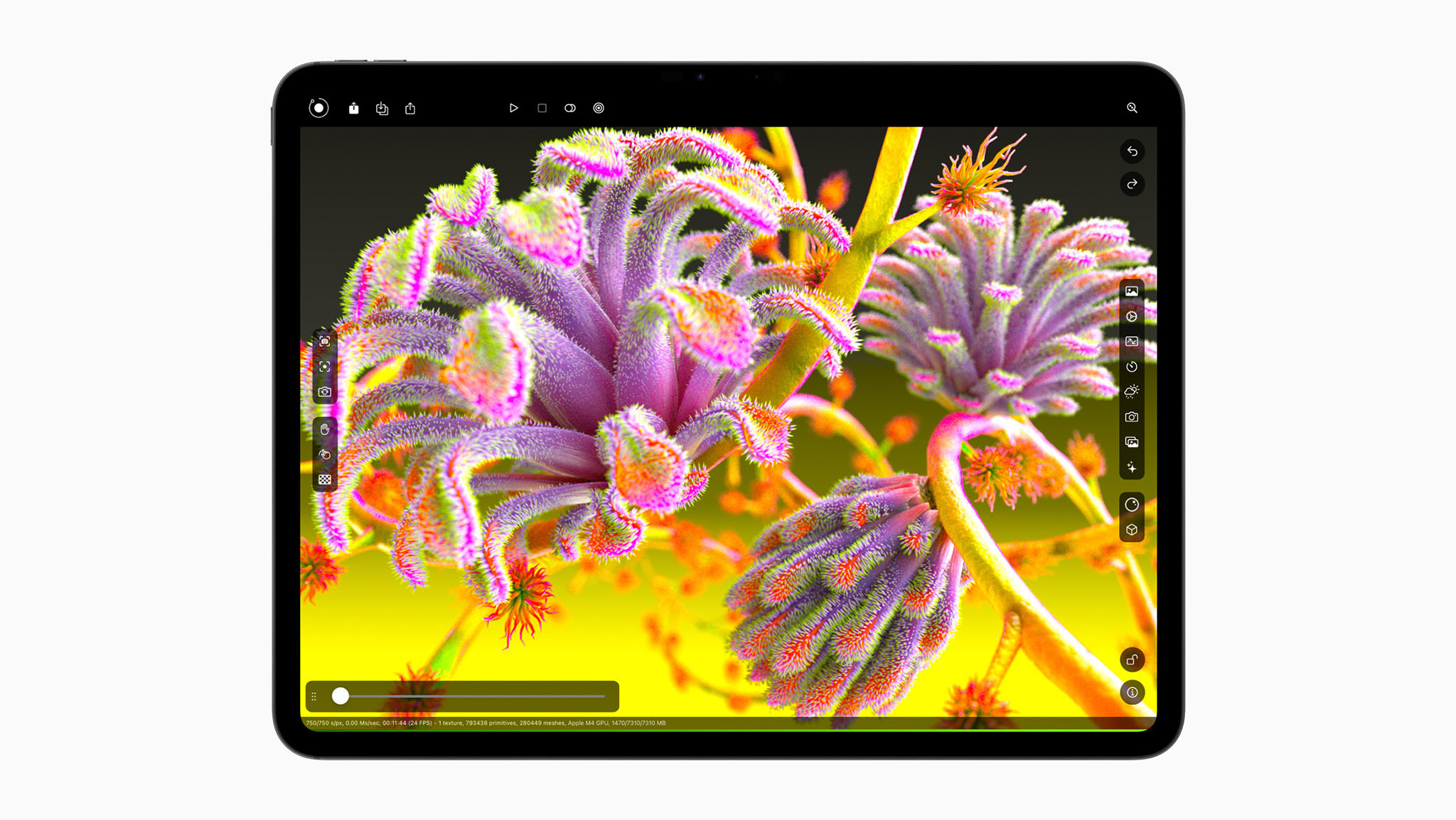Apple just introduced the OLED iPad Pro, and it is incredible
With next-gen M4 silicon and an unbelievably-thin design, this is the refresh the iPad Pro needed.

Apple's long-awaited iPad update is here, and it brings sizeable changes to both the iPad Air and iPad Pro. I'll focus most of my attention on the iPad Pro as it has much more exciting tech, but a quick rundown of what's new with the iPad Air. The 2024 model is available in two sizes — 11-inch and 13-inch — and it comes with 128GB of storage.
Similar to the iPad Air M1, the 2024 iPad Air is still limited to 60Hz refresh — 120Hz is exclusive to the Pro models — but it is powered by the M2 chipset, delivering much better performance. A key difference is that the camera is now located on the leading edge, which is where it should have been all along. The 11-inch iPad Air starts off at $599, with the 13-inch model now available for $799. Configuration options go up to 1TB.

The iPad Pro has all the latest tech, including an Ultra Retina XDR screen. The tablet is available in 11-inch and 13-inch variants, and both models have 120Hz OLED panels that hit 1,000 nits in SDR and HDR modes, going up to 1,600 nits. The iPad Pro uses a tandem OLED — similar to that of the Honor's Porsche Design Magic 6 RSR — to deliver increased brightness and panel longevity, and there's an optional nano-texture glass coating that reduces glare.
There's a lot to like on the design front as well. The 11-inch iPad Air comes in at just 5.3mm, and the 13-inch model has a thickness of just 5.1mm, making it the thinnest Apple product to date — it's thinner than the iPad Nano. They're lighter as well, and are touted to have better durability.

To accommodate the svelte designs, Apple is introducing a new Magic Keyboard that has an aluminum palm rest. It gets a function row, and the standout feature is a haptic trackpad that should deliver much better feedback. The Magic Keyboard costs $299 for the 11-inch variant, and $399 for the 13-inch option.
Powering the iPad Pro is the brand-new M4 silicon. It is 50% faster than the M2 in the last-gen iPad Pro, and that is just a massive gain in performance between generations. The M4 also gets dynamic caching, ray tracing, and mesh shading, and is 4x faster than the M2 at rendering tasks. The new 16-core neural engine is able to hit 38 TOPS, and that is just in a league of its own.

The M4 also gets AV1 decode, and it has a memory bandwidth of 120GB/s, making it a terrific choice for gaming. To round things out, there's better thermal management, and the M4 should deliver noticeable efficiency gains as it is built on a second-gen 3nm node.
Get the latest news from Android Central, your trusted companion in the world of Android
Finally, there's a new Apple Pencil Pro that costs $129. It has sensors in the barrel that unlocks a squeeze gesture to pull up menus, and there's a haptic motor integrated into the design. The Pencil Pro can be used with both the iPad Pro and iPad Air models.
The 11-inch iPad Pro starts off at $999, with the 13-inch model debuting at $1,299. Both variants get 256GB of storage as standard, and they go up to 2TB. They're available to pre-order right now, with sales starting May 15. The 2022 iPad Pro is still going strong, and the new additions to the M4-based iPad Pro gives it a distinct edge. The OLED panel in combination with the new design makes the iPad Pro that much more enticing, and as someone who uses the iPad Pro a lot, I can't wait to get stared with the 2024 variant.

Harish Jonnalagadda is Android Central's Senior Editor overseeing mobile coverage. In his current role, he leads the site's coverage of Chinese phone brands, networking products, and AV gear. He has been testing phones for over a decade, and has extensive experience in mobile hardware and the global semiconductor industry. Contact him on Twitter at @chunkynerd.
You must confirm your public display name before commenting
Please logout and then login again, you will then be prompted to enter your display name.
